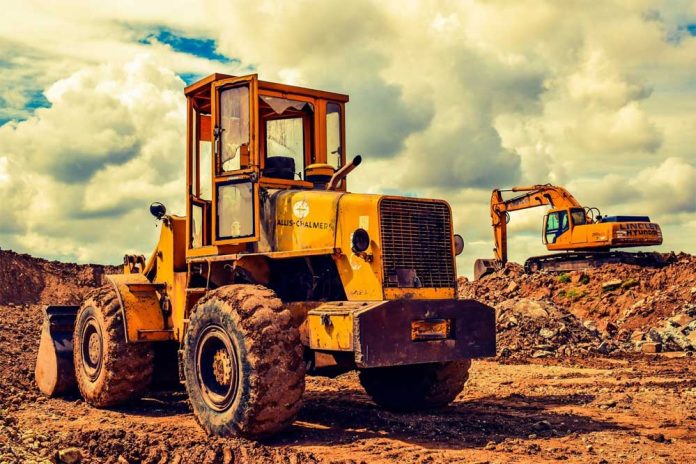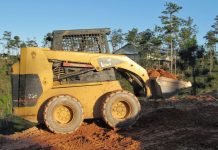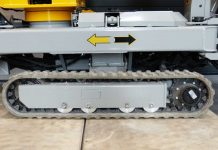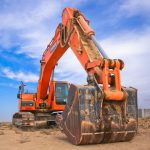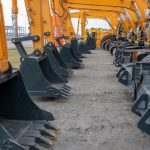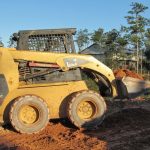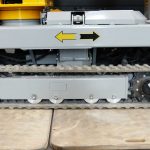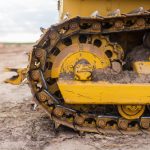There is a common but false belief that the latest equipment is always better because it requires less upkeep than used equipment. In fact, this perception has often resulted to building firms paying far more than they required for machinery that could have been purchased in great condition for far less. With increasing operating costs and the cost of equipment continuing to rise, the purchase of used construction equipment might be a smart decision.
Some company owners fear that the danger of used equipment may outweigh the benefits. But with some effort on the part of the buyer, the most common buying dangers can be prevented. Here are some tips for buying heavy equipment.
Inspect the equipment
Most used equipment is sold as-is. If possible, test and inspect used equipment before you buy. If you don’t have considerable heavy equipment knowledge, have a qualified mechanic or experienced operator carry out both a physical and functional inspection on your behalf.
If you’re buying online, look for websites that provide detailed equipment information and photos. Scrutinize pictures carefully and don’t be afraid to email any questions you have to the seller or to ask for photos of the equipment from different viewpoints; for example, a photo of the undercarriage, engine compartments or hours meter.
It is always best to inspect in person. This way, you can ensure that it’s thoroughly intact and operable both inside and out. When you do a physical inspection, here’s what to look out for
Cab— If all the controls, pedals, sticks, dashboard elements, seat adjustments and steering functions are functioning properly, it’s a sign you have found a good deal. A clean interior with an intact seating upholstery is also important. as this shows the cab has been well-maintained. Take note of any small things that might make the machine uncomfortable during eight hours of work when testing the car, like seat vibrations or reflections.
Chassis— Test the metal frame for traces of welding around the arms, locks, sprocket and tracks; look for any motor, sleeve, pump, ram or hydraulic part leakage. Although it is natural for a used vehicle to demonstrate modest signs of wear, untreated damage that could affect your safety or comfort could signal that the machine hasn’t been maintained very well.
Engine and transmission— The engine and transmission should be checked closely, preferably by a skilled operator with solid knowledge of in engine components. Pay attention to strange sounds, check for emissions, and ensure that there are no warning signals when revving the engine. Test the equipment and reverse to see how well the machine runs; any roller noise might indicate worn-out parts. Check the engine to see if the hot, moving parts are correctly protected and working well. Check for wear and leaks in the pump and swing bearing.
Tires and tracks— Check for cracks or bubbles which both indicate that the vehicle has been stored outdoors. Check the tires for uneven irregular wear with a tread gauge. This is one of the main signs of drivetrain problems. Make sure that every track and bolt is in position when inspecting a tracked machine. Tire and track replacements are often expensive, so check the overall cost for replacements for the model you are inspecting.
The U.S. government’s GSA department has a comprehensive checklist that different government organizations use to purchase heavy equipment. Print their checklist and follow the above advice and you’ll be fully ready for when the inspection time comes.
Check the paperwork
Operating Logs – The most comprehensive listings will have either the amount of miles or the amount of hours worked by the operator. While this is not compulsory, be cautious of professional businesses that do not maintain precise operating logs. If feasible, check the interior situation and compare it to the amount of miles or hours logged in. Look at the pedals, the levers, and the seats for indications of wear that matches the logged operational models.
Maintenance Logs – The most reliable vendors will be able to provide time-stamped documents showing consistent changes in fluids, small repairs and any significant issues.
You can use these details to confirm that heavy machinery has been used as stated. Any sudden gaps could show negligence and you should ask questions about why the gap exists.
Check the Reputation of the Seller
- Make sure they are reputable
Take some time to read internet reviews, accounts and reports to get an idea of the seller. You can check the following sources:
- Public company records – Choose established businesses with an extensive client base and a good reputation. Publicly traded businesses must publish their financial statements, so it’s easy to see if the business is stable and likely to be in business for the long term
- Online reviews – Google and Facebook are good places to find unbiased customer reviews. Once published, Google and Facebook reviews can’t be removed or edited by the page owner.
- Customer testimonials – Testimonials show that other equipment buyers are more than willing to endorse the seller.
- Check their background
Make sure the vendor is the legal owner or has the legal power to sell on behalf of the proprietor before buying used machinery or trucks.
If you purchase from a business, ask if the equipment is entirely owned by the seller. If you buy from a private seller, ask them to provide their initial sales invoice and make sure that the sales invoice name matches the name of the seller.
The equipment’s serial number or the truck’s VIN can also be used to track ownership. Ask your local police or private department to run the serial number or VIN to see whether it has been reported stolen. For a fee, you can also request the services of an agency that monitors stolen machinery.
- Make sure the equipment has a clear title
You might be forced to forfeit possession to a lending institution if you mistakenly buy devices with a non-clear title or a lien (i.e. that the seller has not yet paid the entire borrowed funds from a financial institution or bank to acquire the item).
Research is key
Unlike purchasing from manufacturers, extra research on individual retailers or distributors is crucial. Explore a range of retailers and request quotations to determine the fair value for a specific piece of machinery. Go directly to distributors and do not depend solely on images online. When you have narrowed down the options, inspect the equipment closely.
These guidelines will not only help you balance the books, but will also help you acquire quality construction equipment that lasts for many years to come.
Once you have found a good deal, it’s always good to have a good parts distributor on call in case you need anything extra. That’s why we’re here. If you’re looking for anything in particular, browse our online marketplace for aftermarket parts!


